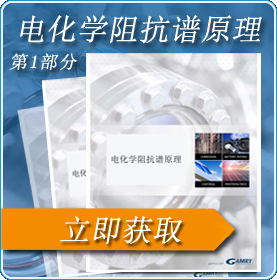非标准充放电循环测试简介:自定义电流分布
introduction
The battery in an electric vehicle discharges while accelerating and maintaining vehicle speed. When the vehicle is braked, the battery is recharged. The driving cycle can therefore reflect significant changes in battery discharge and charging, so that it is possible to observe amp-level current fluctuations. For example, the United States Advanced Battery Association (USABC) conducted a federal city driving schedule (FUDS) cycle test on electric vehicles, and then the results are shown in Figure 1 as a percentage of peak discharge power versus time. Negative percentage values refer to the discharged state, while positive values refer to the charged state.
The battery's cyclic charge and discharge (CCD) is a standard cycle test implemented by Gamry in the electrochemical energy package. We also have an application report explaining how to run a CCD with our electrochemical workstation. In this application report, a cyclic test of constant current, power or resistance is not sufficient. The test used here uses a preset current distribution to discharge the battery. This current distribution is designed to simulate the operating conditions that a battery faces during its life. Here we tested electric vehicles and driving cycles, such as the US Environmental Protection Agency (FBA) Urban Dynamometer Driving Schedule (UDDS), and associated battery charging and discharging.Although we have not tested real electric vehicle batteries, we show the results of a standard 18650 lithium-ion battery.
Finally, we showed how to create a Framework™ software script on your Reference™ 3000 or Interface™ 5000 to run various tests.
Battery specifications and installation
Using the loop in Figure 1, we created a preset current distribution as shown in Figure 2. This current distribution is scaled for our Interface 5000 electrochemical workstation. We run ten cycles in order to ensure that the electrolytic cell reaches the lower voltage limit.

Figure 1 FUDSUSABC-FUDS cycle test based on FUDS exhaust gas test c
(Source: http://www.uscar.org/guest/teams/12 )

Figure 2 Current distribution for the first 3600 seconds for battery discharge
Current scaled to a maximum of 5 amps to match the Interface 5000 electrochemical workstation
In addition to displaying non-standard cycle tests, we have used the built-in interfaces of the Interface 5000 and Reference 3000 electrochemical workstations to detect temperature monitoring [JB1]. Reference 3000 contains a typical K thermal coupling interface, as shown in Figure 3. On the Interface 5000, the temperature monitoring requires the auxiliary 5000 monitoring substrate, which is directly connected to the monitoring interface on the front panel.
The measured 18650 battery specifications are listed in Table 1. The interface of the instrument is marked in Figure 3. The connection is shown in Figure 4. An RTD element (Omega, RTD-1-F3141-60-T) for temperature monitoring is attached to the outer surface of the electrolytic cell. RTD components are connected via an Interface 5000 monitoring board (Gamry Instruments 990-00401). The monitoring board is an accessory that provides BNC connection to auxiliary channels through the front panel monitoring interface.
Table 1 battery specifications
|
Capacity |
1300 mAh (nominal) 1250 mAh (standard) |
|
Charging voltage |
4.2 V |
|
Nominal voltage |
3.6 V |
|
Charging current |
0.5 A (standard) 4 A (rapid) |
|
Discharge voltage cut-off |
2.5 V |
|
Discharge current (continuous) |
18 A (maximum) |
|
Internal impedance |
~ 30 mΩ (1 kHz) |

Figure 3
Temperature monitoring interface on the rear panel of Reference 3000 (above) and the front panel of Interface 5000 ( below) (circled in red)

图4 电解池缆线连接到电池(上图)和监控基板(下图)。
温度传感需要5000监控板。辅助导线与接地线短路连接(未显示)。
标准充放电循环测试
电解池在恒电流模式下充放电。一开始,电解池在4 A电流下被充至充电电压4.2 V,使用截止条件100 mA结束充电。然后,电解池在5 A电流下放电到放电截止电压2.5 V。在充放电之间加入5分钟的休息时间。图5展示了电解池在一个较短的五循环测试中的容量。当每个测试都使用恒电流充放电时,所得结果与标定容量相一致。放电过程中的电解池电压在整个循环过程中都是稳定的,而且放电过程通常是15分钟。


图5 电池五个循环估值容量和电解池电压。
数据标签(上图)指的是放电容量值。
图6显示了前两周循环放电过程中的电池温度响应。每一个循环过程中,电池温度从室温提高到40 °C。这是放电电池的正常表现。但是,这类的温度分布可能不能反映动力学环境的真实温度变化。图7显示在动力学环境中,温度峰值大约高出移动基线1°C。循环响应遵循每一个驱动循环开始处的大电流消耗,其在大约200s达到峰值如图1所示。两种温度分布的显著区别是他们的终温度值相差超过10°C。这表明了选择每一个电池应用的正确放电分布的重要性。
 图6 两个循环的电解池电压和温度响应
图6 两个循环的电解池电压和温度响应
 图7 五个驱动循环的电解池电压和温度响应,驱动循环缩放到大5 A放电电流
图7 五个驱动循环的电解池电压和温度响应,驱动循环缩放到大5 A放电电流
当电解池电压达到2.5 V,运行停止
Although 5 A is the current limit of the Interface 5000 electrochemical workstation, 5 A is not truly pressurized on a battery with a rated maximum discharge current of 18 A (Table 1). To test the maximum pressure on the battery, we turned to using a combination of our Reference 3000 and 30k Booster. We scaled the current distribution to 18 A and then ran the same test. The results are plotted in Figure 8. At 18 A, the battery only ran a complete drive cycle and exceeded the cut-off voltage of 2.5 V in the second drive cycle. At a high current consumption of ~ 200s, a temperature rise of 6 ° C can be seen.

Figure 8: Cell voltage and temperature response for a single drive cycle scaled to a maximum 18 A discharge current.
When the cell voltage reaches 2.5 V, operation stops
Finally, for consistency, we calculated the power consumption based on the data and compared it with the original drive cycle (Figure 1). Figure 9 shows the first 300 s. The measured curve is consistent with what we expected, and the iR effect becomes significant at higher currents. For more information on iR compensation, please browse our application report to understand iR compensation.

Comparison of measured peak power and ideal value in Figure 9 (Figure 1)
For clarity, only the first 300 s are shown
customer feedback
If you are interested in adding this feature to your current system or obtaining a system that can implement this feature, please contact us at (215) 682-9330, techsupport@gamry.com or through our website, www.gamry.com . We hope that the experimental technology we provide can be continuously improved based on user feedback.


